A COVID-period ride in Western Australia (WA), made possible because I was in Tasmania, the only eastern state from which you could enter WA in November.
The Munda Biddi Trail was opened in 2013 and at the time was stated to be the longest (1,050km) off-road bike trail in the world.
“What is the widest tyre I can put on with the mudguards still fitted?”
It’s a region that gets most of its rain in winter so winter was out due to wetness, cold (and the need to carry more clothes), and short days. I chose the last week of November and into mid December. From the logbooks in the huts the most popular times are May-April and September-October, the latter being the best for wildflowers.
Bike-wise, primarily this is testing a 2.25” wide tyre, Rohloff version of the World Randonneur bike from recent production, fitted with 650B rims and tyres and wider mudguards. Over the last 7-8 years a frequent question has been…”what is the widest tyre I can put on with the mudguards still fitted”. Using 650B, it is probably 2.8”.
This is a long ride. It will really test several issues that might not be as noticeable on a day ride. Front suspension is one. Many off-road trails are not actually rough, but this one is. You are going over seas of big gum nuts, lots of fallen branches and some rocks. Will the lower pressure, bigger front tyre make it ok for my hands and wrists or is suspension necessary? To find out I’m testing a suspension stem. “Bottoming out” is the problem that all other suspension stems suffer from. But this one can’t bottom out.
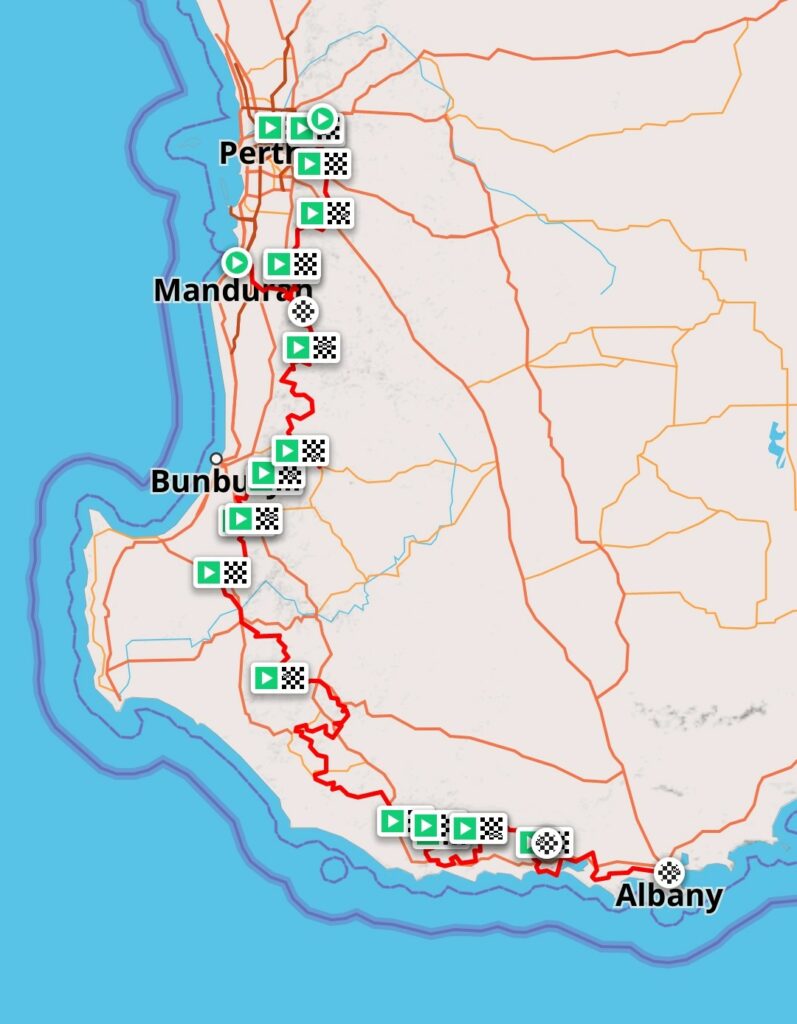
I am also gathering date for electronic engineers that are working on better ways to save power via a reengineered dynamo hub and a super-capacitor storage system. A prototype front hub is fitted.
The Munda Biddi is undertaken from the North or from the South. I’m starting in the North in early summer knowing that the climate is a bit cooler and wetter in the south.
Although it is off-road, the MBT goes through several towns. There are caravan parks with tent sites and cabins, Youth Hostels, pubs and motels.
Mostly you are in forests.
In between most of the towns there are huts. You can’t book them. They are not getting maxed out. In fact, it’s common to be the only one at a hut.
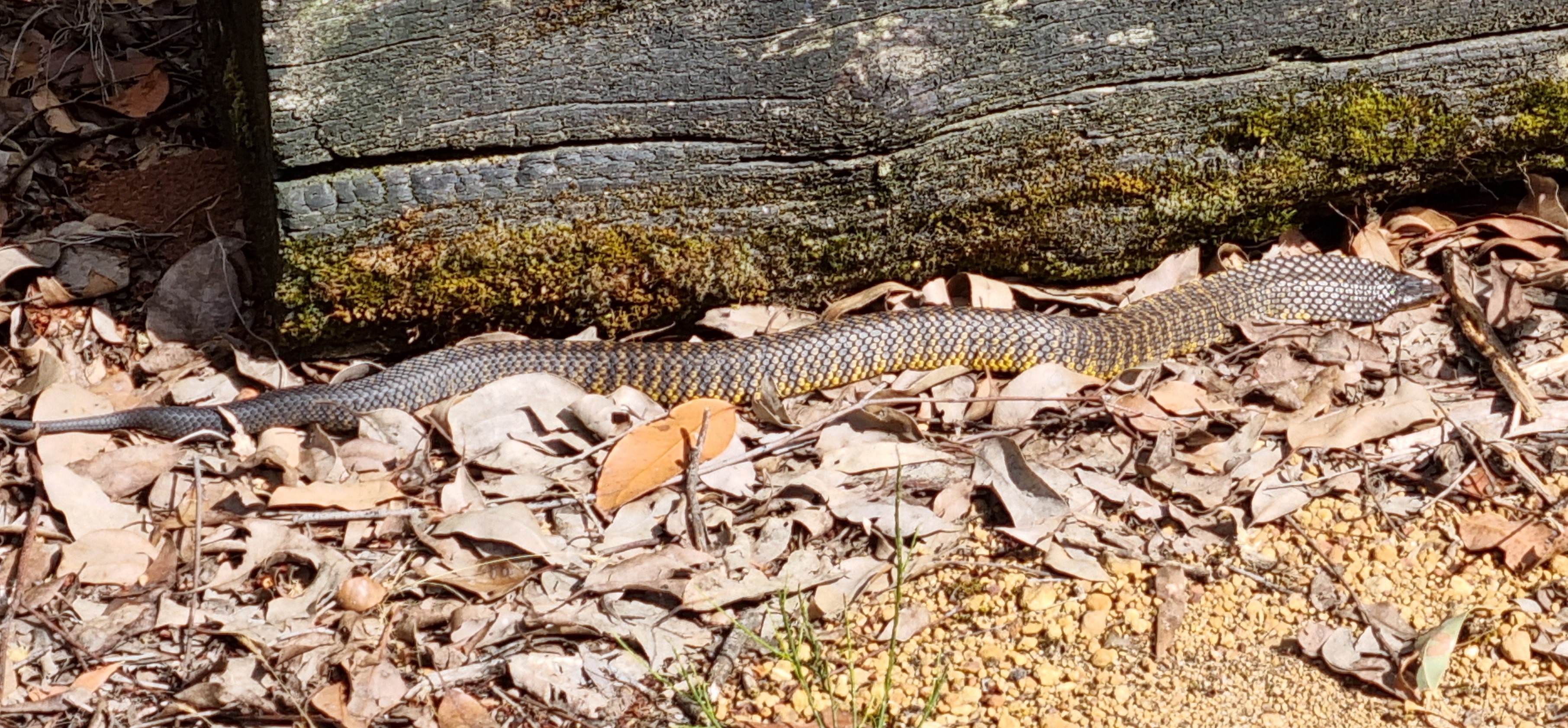
It is recommended to carry a personal locator beacon (PLB) because there is no phone coverage in large areas. On this ride there were two pairs of days when I did not see another human. I found myself descending gravelly steep hills very carefully.
I really didn’t want to come off and possibly be stuck. There are a lot of snakes. People carry a compression bandage for this purpose. Bites are very uncommon, but you can see in this picture, taken near a hut, how you could be just walking around, step over a log and startle a very deadly snake.
The huts really make the ride. They are very well designed and are made to last probably over 100 years. They have good roof water. The gutters are covered with wire mesh and there is a first-flush system but no showers or electricity.
You get to stay in a town the next night and find a shower.
There are logbooks and note books in the cabins. In them there are a number of reports of people having to pause or stop the ride due to equipment issues, all of them around rear derailleurs, chains and cassettes.
There are a lot of sticks and branches that you can’t avoid. Cyclists with rear derailleurs told me they are on high alert to brake instantly they hear the sound of something getting caught. That does not happen with a carbon belt.
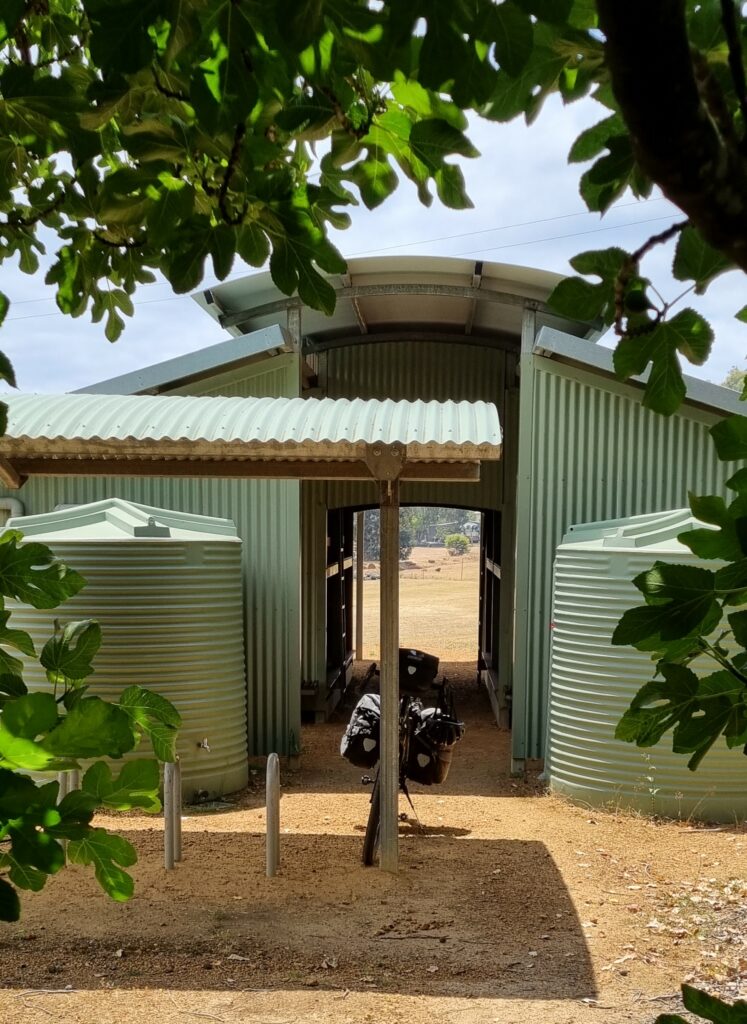
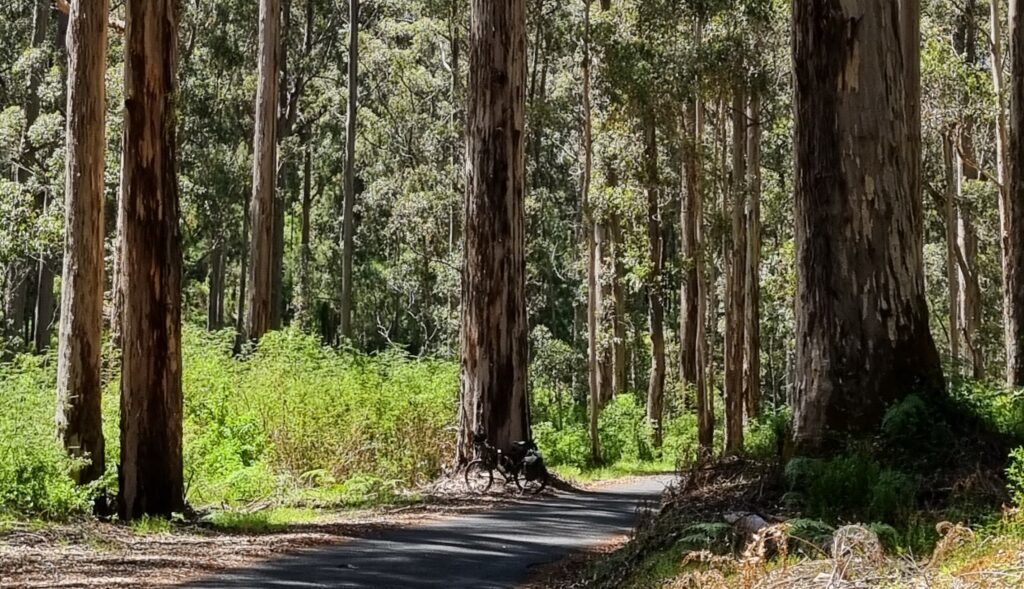
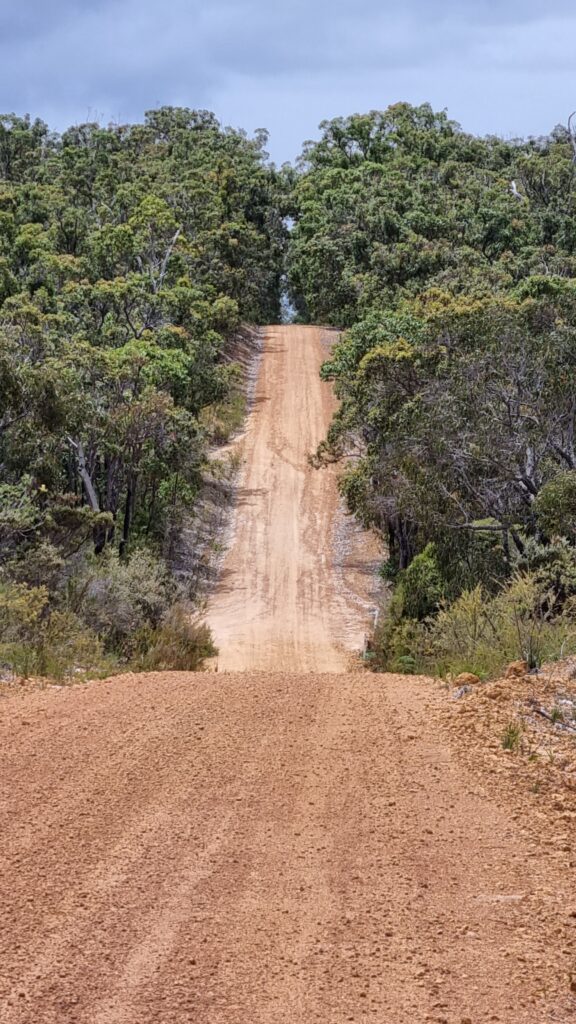
The Rohloff advantage of being able to change gears whilst stationary really came into its own. I’d see a hill and think I could get up it but often I’d get to the rear-wheel-spinning stage and have to get off. There’d be no time to change down and after a short walk I’m ready to start riding again. Being able to manually select any gear from a standstill is great on trails like this where there is a lot of unplanned stopping.
I’ve never been a walker (beside the bike), but it is happening a lot on this trail. Same with everyone else. But people are often only going 50-70km a day and don’t mind.
On the Gibb River Road, which I did with 40mm tyres, I only walked 100m and on the Munda Biddi Trail, with 2.25” (57mm) tyres, I walked several kilometres.
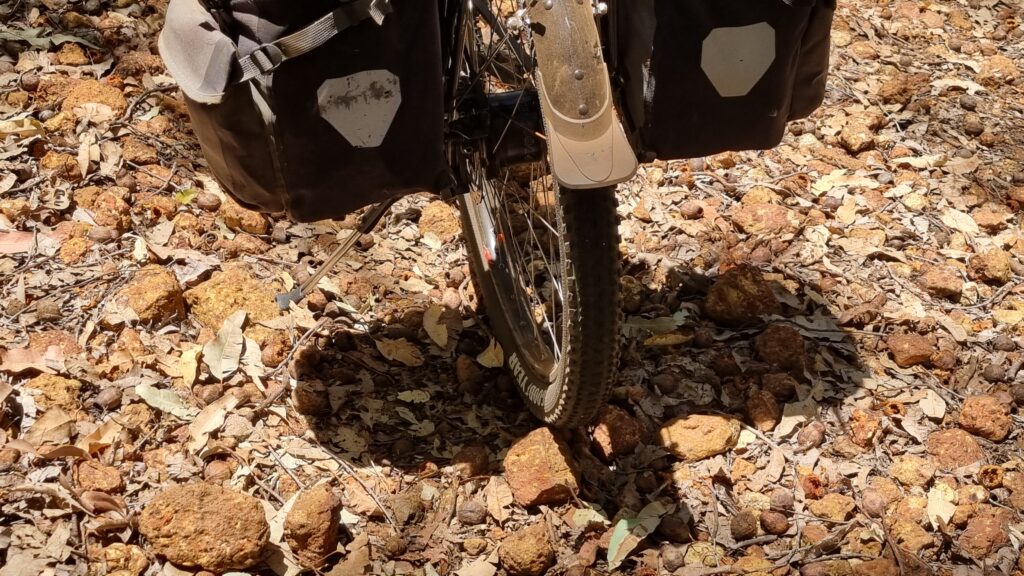
Already on the second day I was thinking I would have thrown the ride in if I had 40mm tyres as on the road-tourer.
Here I only have 35psi so I can ride on bits that I could not ride on with 55-60psi in Schwalbe AlMotion 40mm tyres.
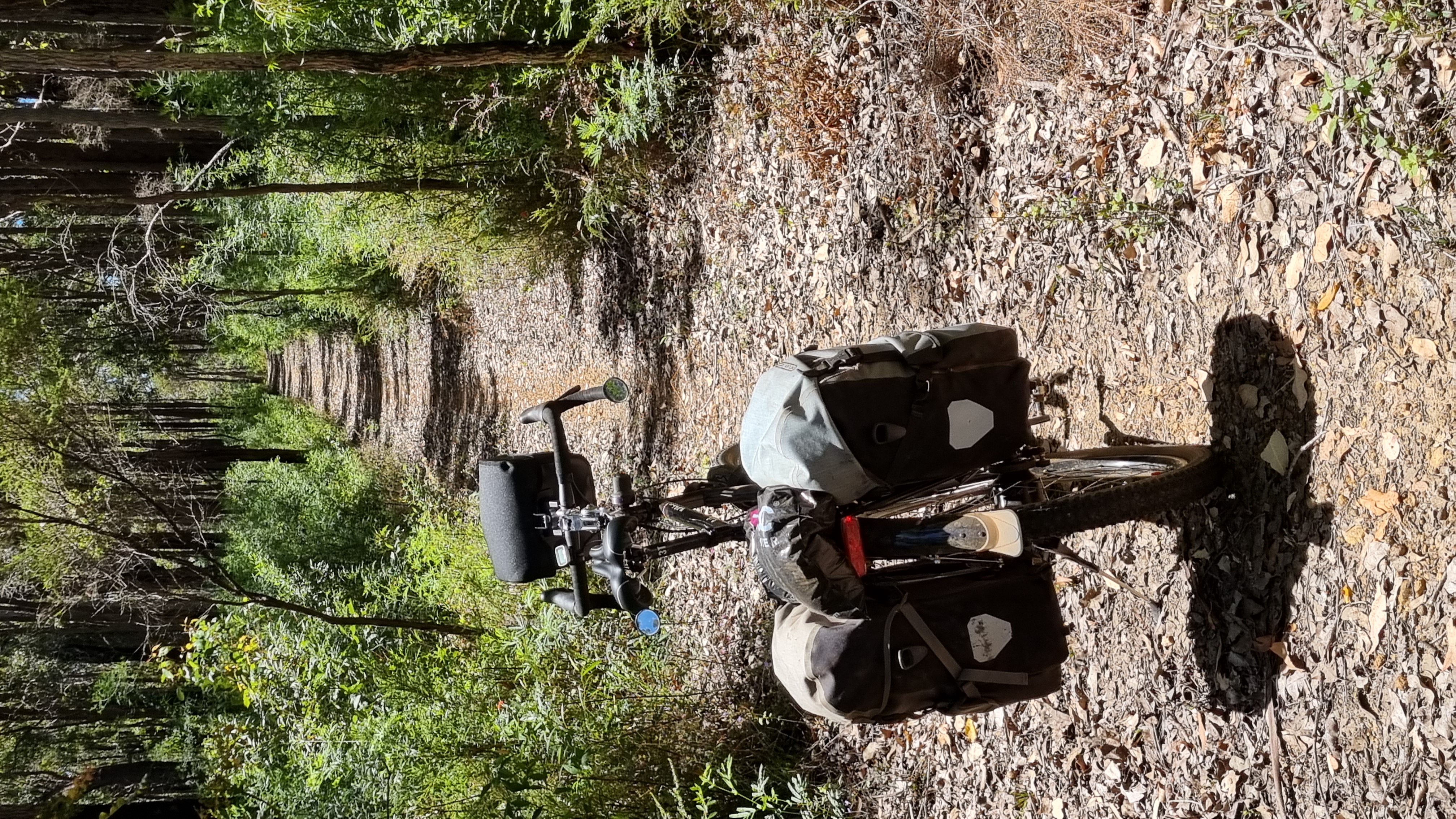
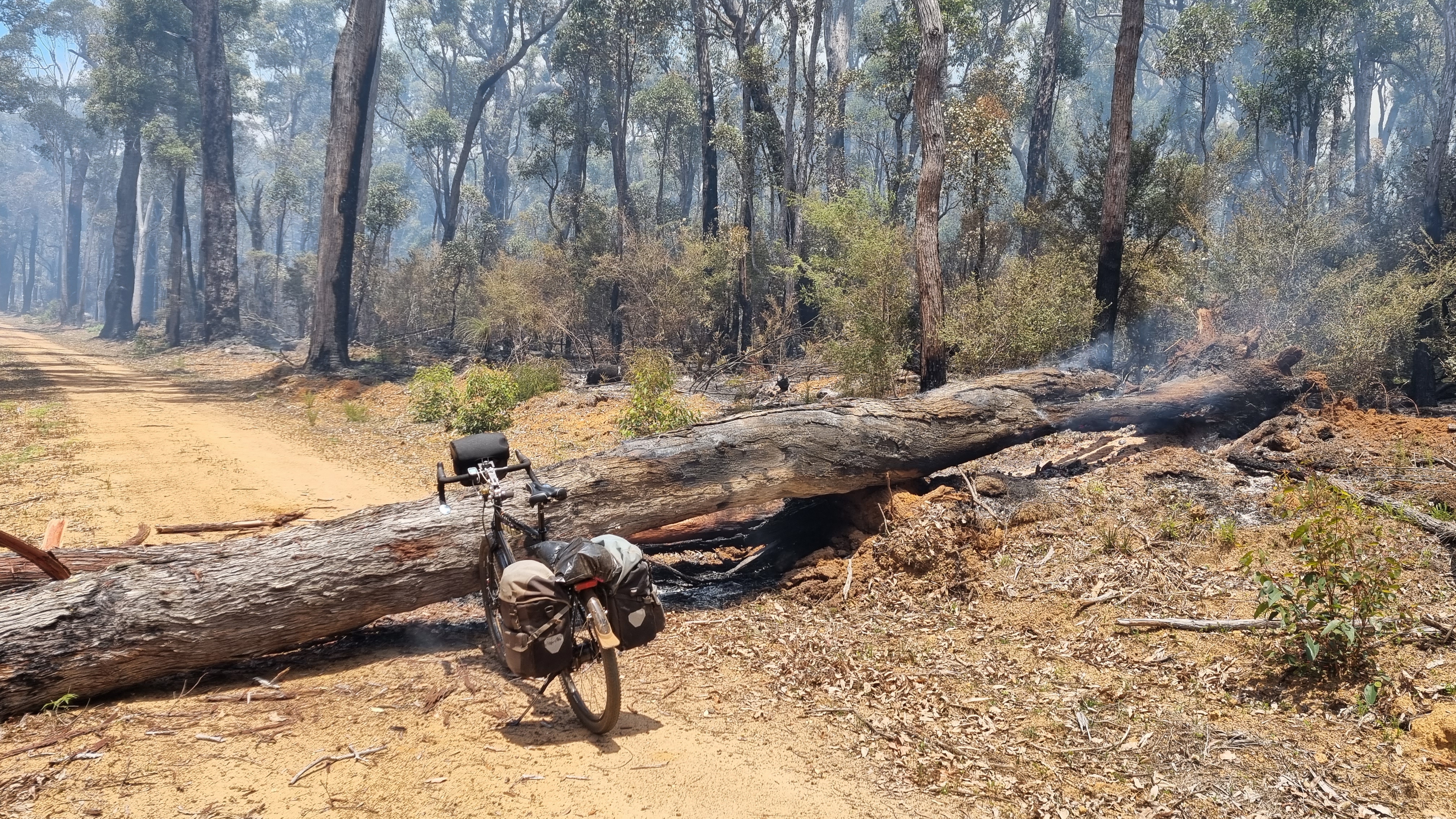
There is some controlled burning at the moment. In this case the diversion tape must have been removed and I am on a 10k section that is still burning.
Panniers are easy to remove and return. There are a lot of logs needing to be got over.
A BOB trailer would be disastrous.
Trail maintenance goes on
Not all of the fallen trees need to be clambered over.
This is one of the biggest. You can’t just walk around them with the bush being so dense and the trees so tall.
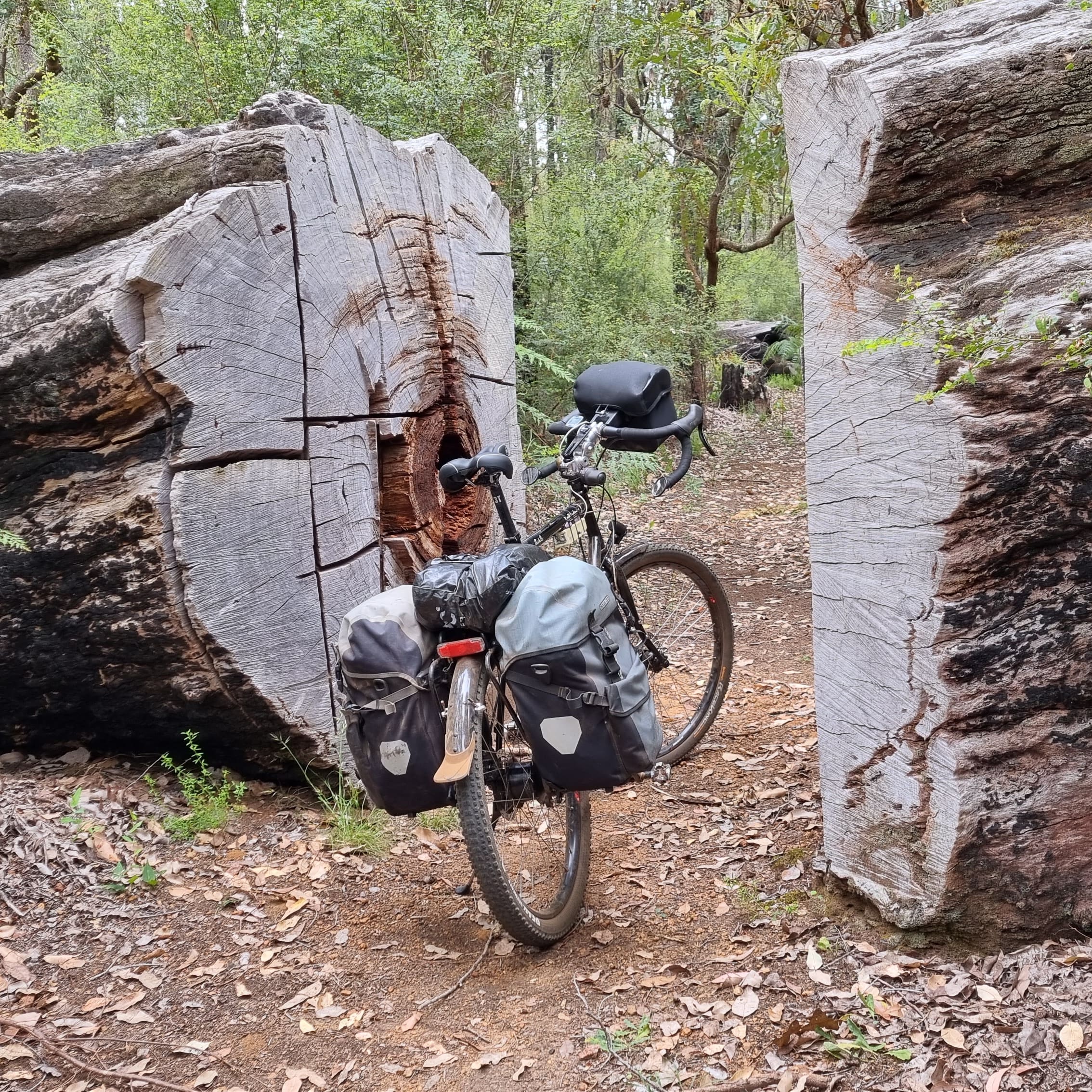
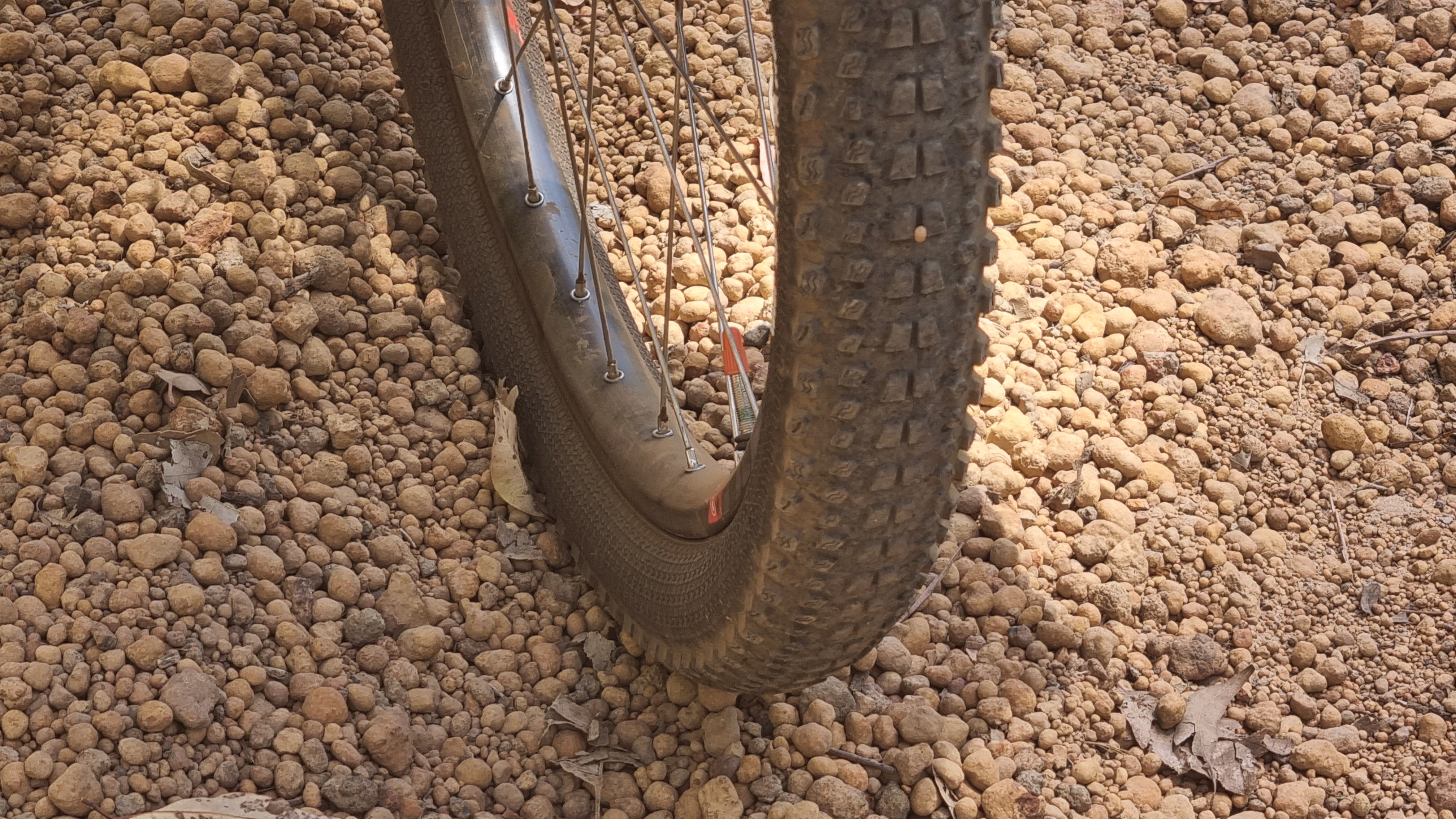
The notorious Munda Biddi pea gravel
Without a doubt, the worst thing to ride on. It’s like trying to ride on ball bearings. There is a lot of it.
Especially in the quieter months there are lots of places where you would see no one else for a day or two. Many are really beautiful, like this very old railway bridge that has been restored for cyclists.
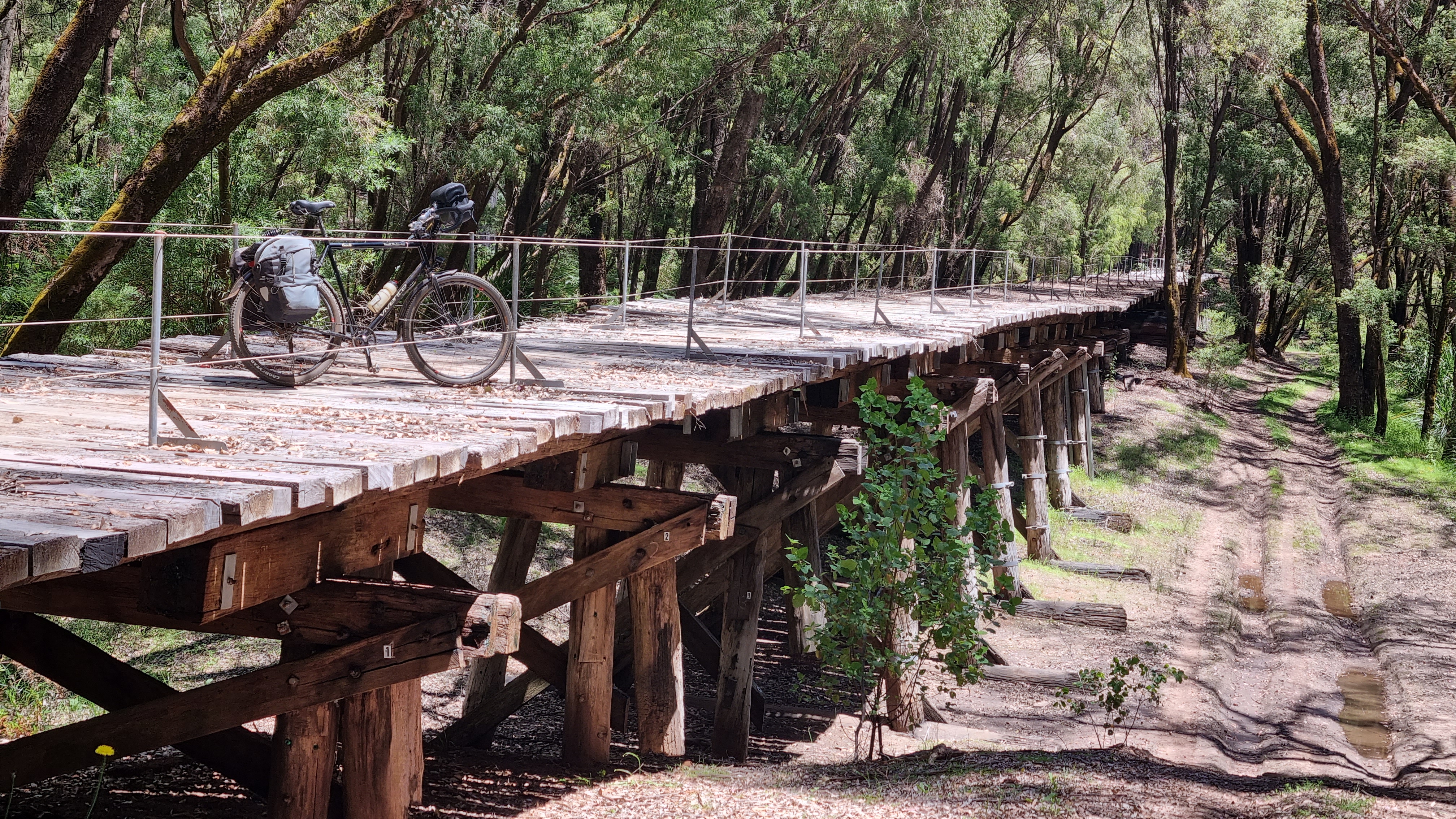
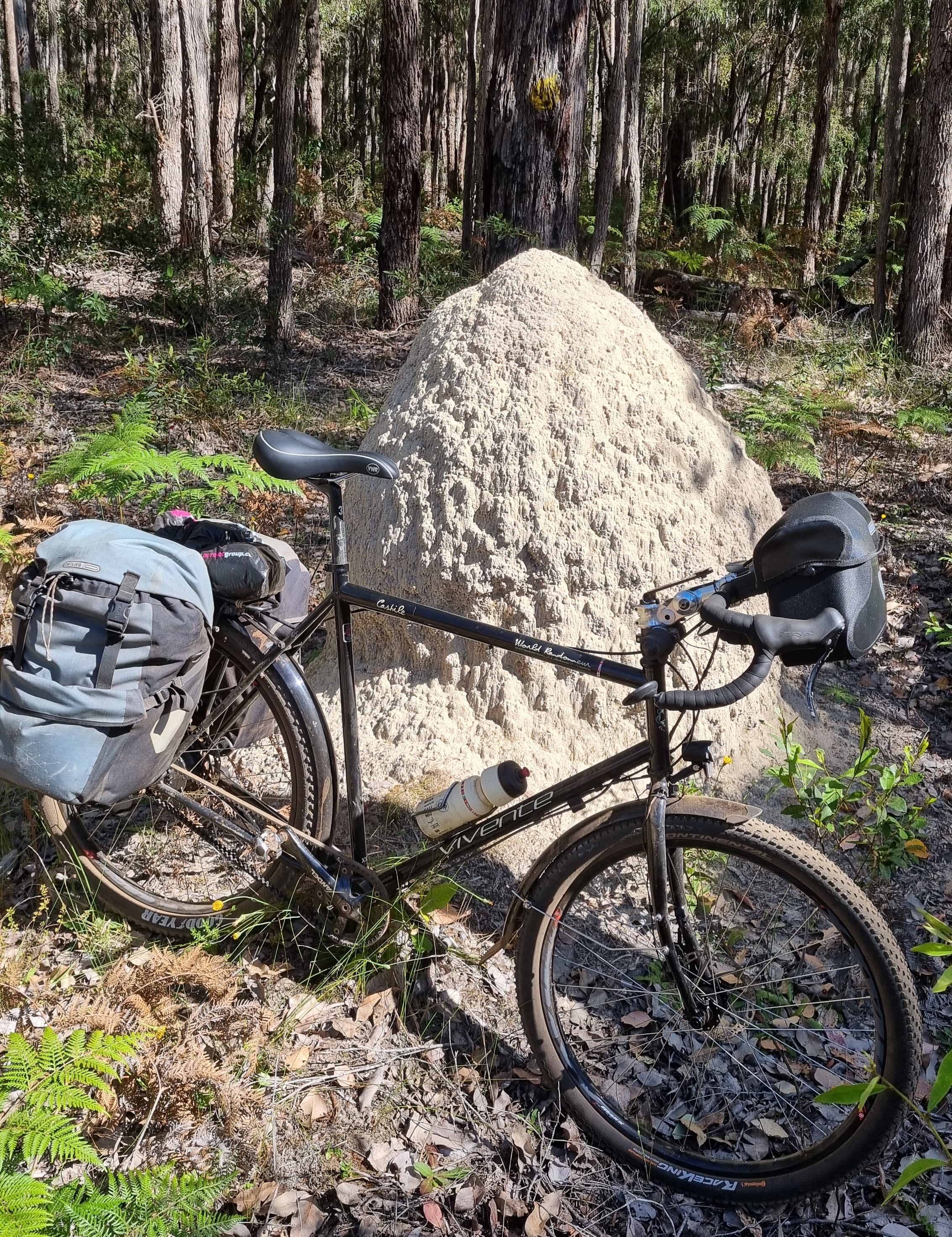
If you happen to be fascinated by ant nests then you’ll love the Munda Biddi Trail. There are many impressive ones of many different types. There are also a lot of lizards that try to invade ant nests.
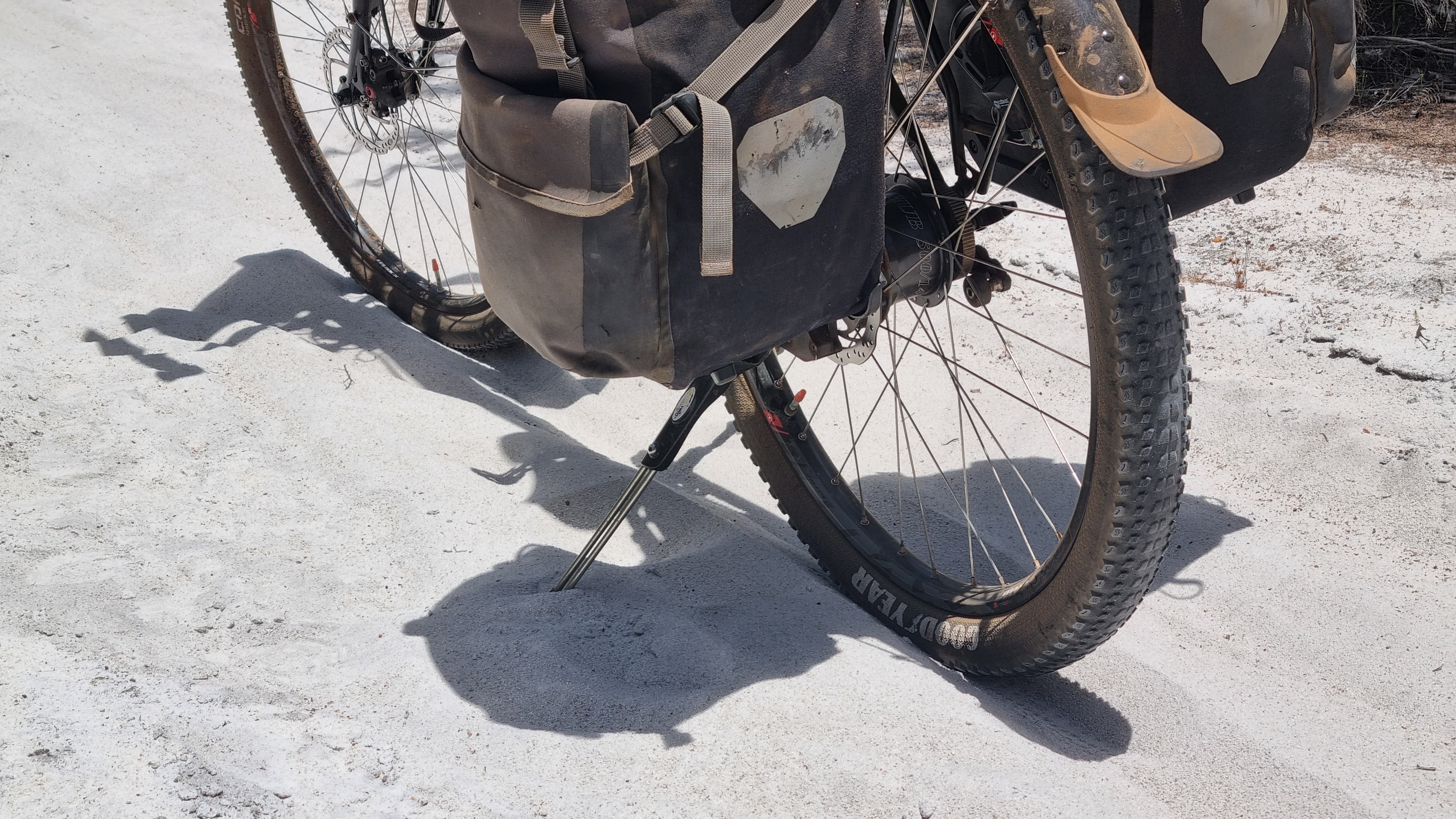
Sand is hard to ride in and there are several stretches of it. In my few weeks on the trail, it only rained once and that was at night. The next day I found that the sand was a lot easier to ride over. Probably, riding the trail in wetter times is ok in this sense.
But there are also a lot of sections prone to water logging where you would have to get off in those times.
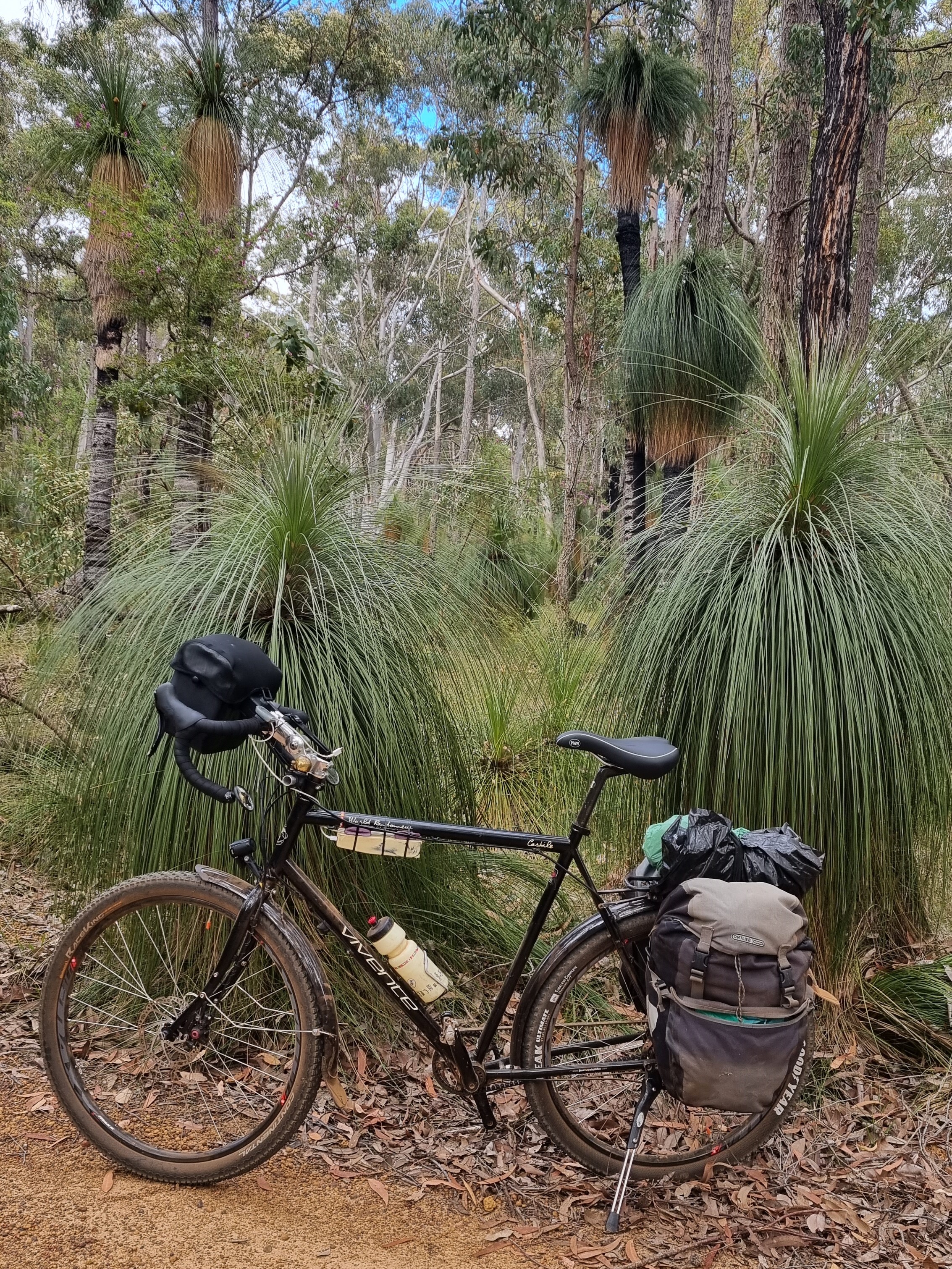
There are lots of these classic Western Australian grass trees.
Did you know that the male emu looks after the chicks?
I was not expecting emus. There were a lot. Sightings of the birds are reasonably common.
What I discovered was that they have very distinctive shit, and this reveals more about how many there are.
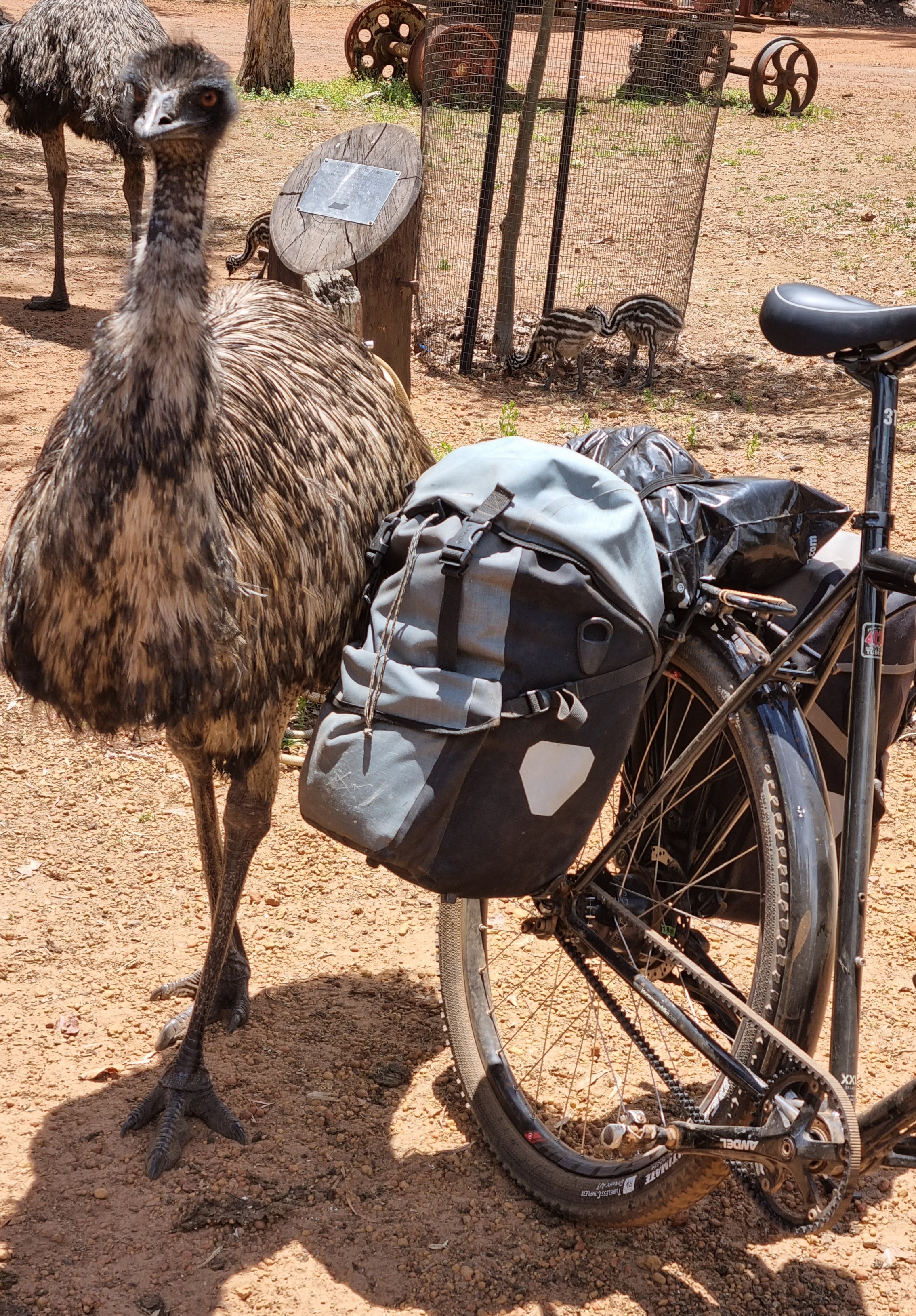
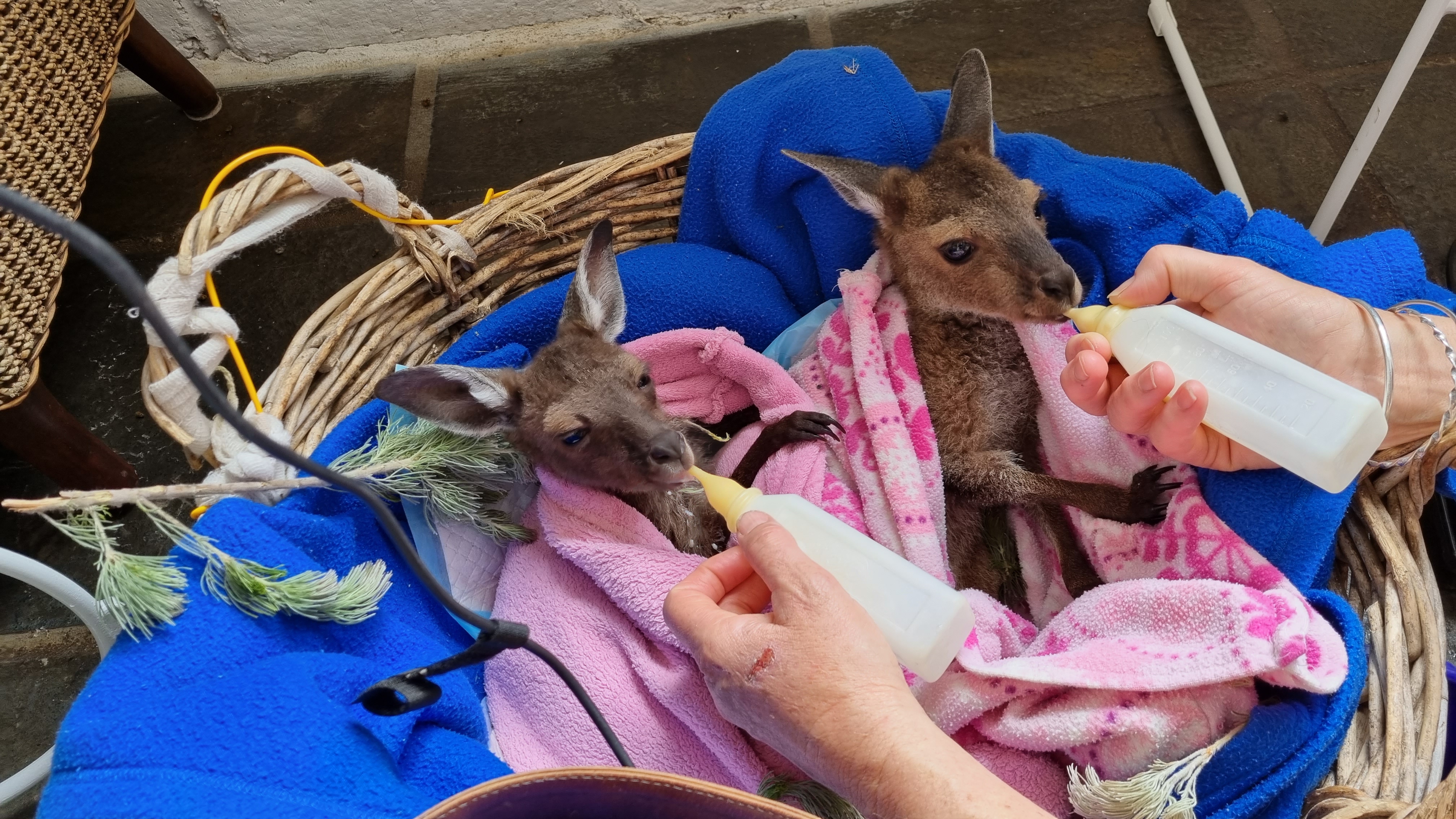
Near Elleker, a very impressive woman runs a wildlife rescue operation. She explained that kangaroos can keep a foetus for up to three years and only let it develop when the conditions are right. They have two nipples and can have one giving milk good for a very young joey while, at the same time, the other is giving milk for a much older joey. How smart and amazing is that!
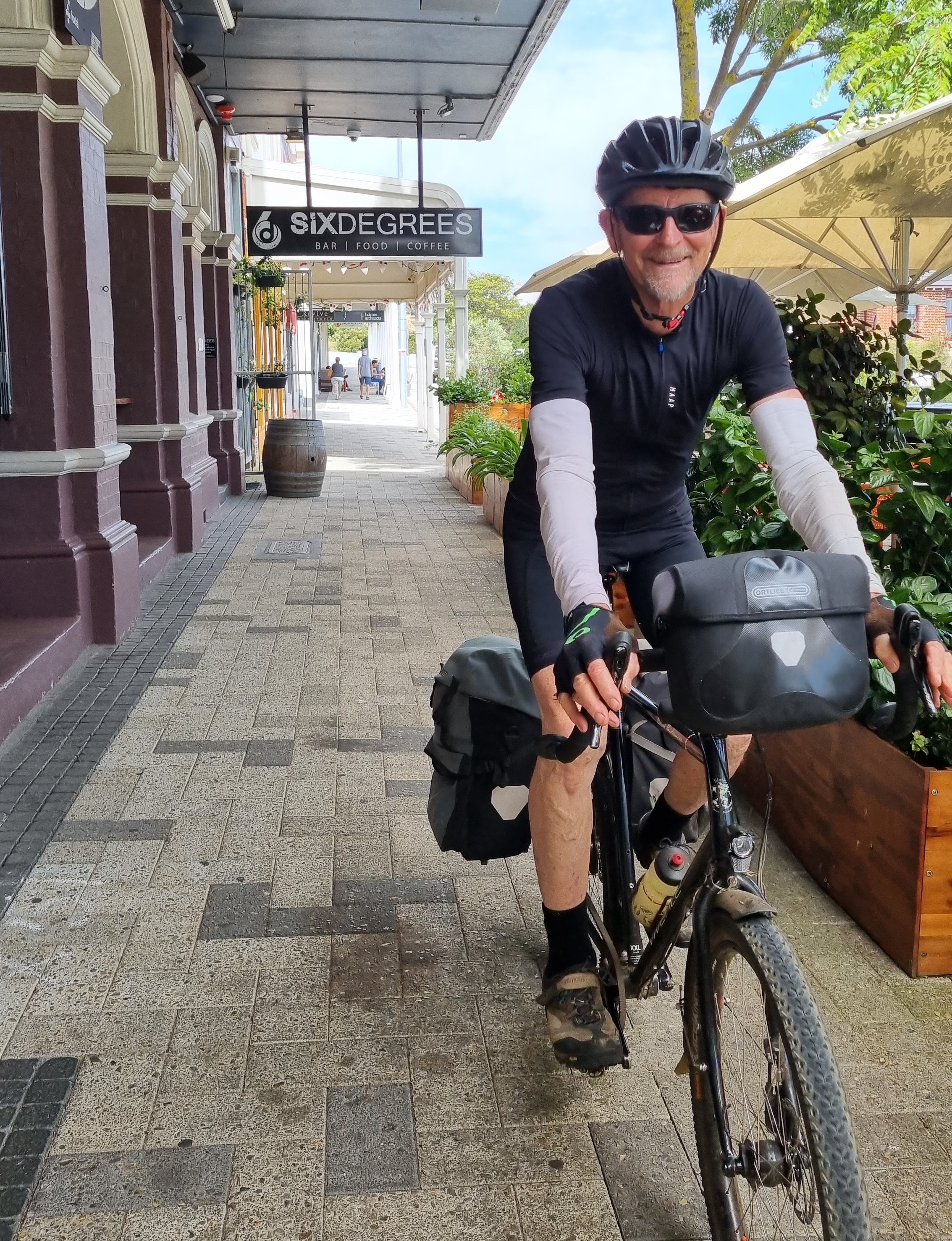
Pulling into Albany
Along the trail, riders share knowledge about where to stay in the towns and the SixDegree Hotel was the place in Albany.
When I researched this ride, I needed to work out how to get back to Perth with the bike. I chose to fly on Rex which turned out to be a small plane. Fortunately, they did accept the bike carton but commented that if it was a full flight, it would have gone on standby.
On the ride, someone mentioned that you can take a bike back on the bus (front wheel and pedals off) as long as you phone them the day before to say that you want to and as long as you can cover the bike to protect other peoples’ luggage. That’s probably the best way.